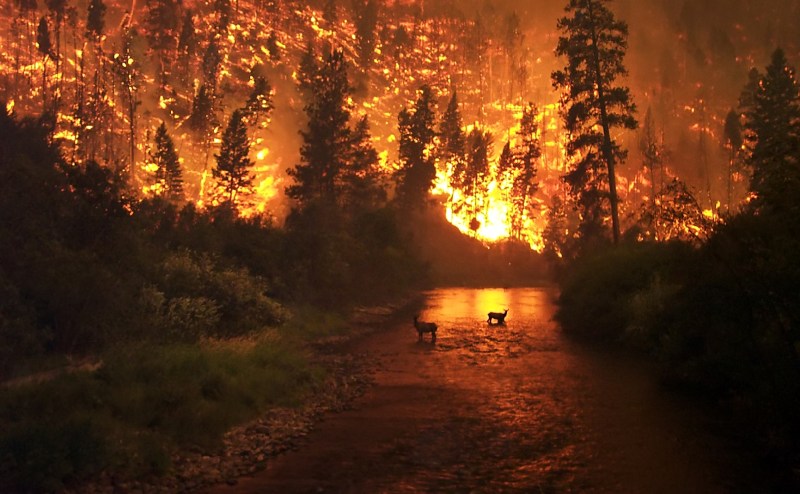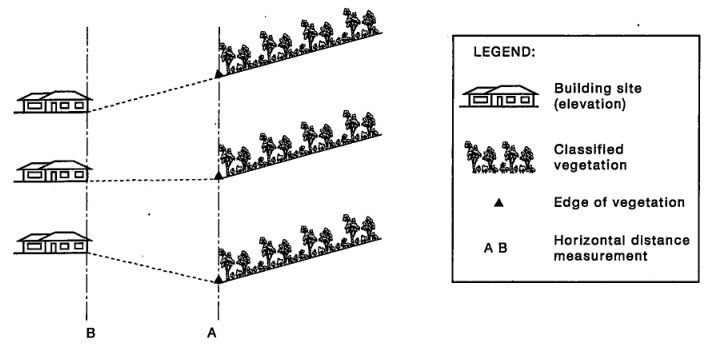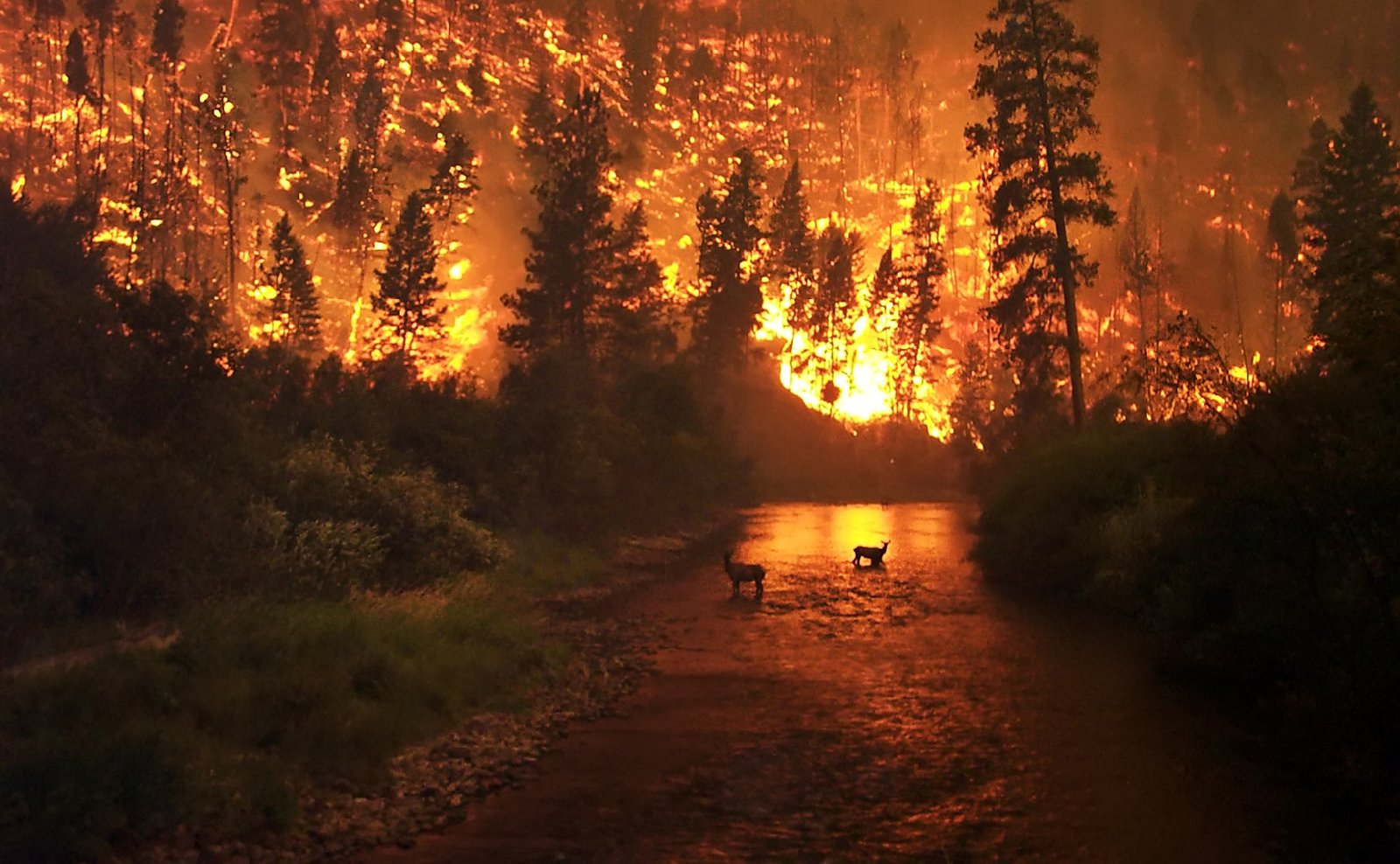
Although the most fire-resistant building is likely a windowless, concrete bunker, this tends to be not the vibe that most home owners go for. This is why over the years construction of buildings in areas prone to bush- and wildfires – i.e. an uncontrolled fire in an area with combustible vegetation – has adapted to find a happy medium between a building that you’d enjoy living in and a building that will not instantly combust the moment an ember from a nearby wildfire gently touches down upon any part of it.
To achieve this feat, the primary means include keeping said combustible vegetation and similar away from the building, and to make the house as resistant to ember attacks as possible. That this approach is effective has been demonstrated over the course of multiple wildfires in California during the past years, whereby houses constructed more recently with these features had a much higher chance of making it through the event unscathed.
Naturally, the devil is in the details, which is why for example the Australian standard for construction in bushfire-prone areas (AS 3959, last updated in 2018, 2009 version PDF) is rather extensive and heavy on details, including multiple Bushfire Attack Level (BAL) ratings that define risk areas and legally required mitigation measures. So what does it take exactly to survive a firestorm bearing down on your abode?
Wild Bushfires
Fire is something that we are all familiar with. At its core it’s a rapid oxidation reaction, requiring oxygen, fuel, and some kind of ignition, which can range from an existing flame to a lightning strike or similar source of intense heat. Wild- and bushfires are called this way because the organic material from vegetation provides the fuel. The moisture content within the plants and branches act to set the pace of any ignition, while the spread of the fire is strongly influenced by wind, which both adds more oxygen and helps to distribute embers to susceptible areas downwind.
This thus creates two hazards: the flame front and the embers carried on the warm air currents, with the latter capable of travelling well over a kilometer in ideal conditions. The level of threat will differ of course depending on the region, which is what the Australian BAL rating is about. As each higher BAL comes with increasing risk mitigation costs it’s important to get this detail right. The main factors to take into account are flame contact, radiant heat and ember attack, the risk from each depending on the local environment.
In AS 3959-2009 this risk determination and mitigation takes the form of the following steps:
- Look up the predetermined Fire Danger Index (FDI) for the region.
- Determine the local vegetation types.
- Determine the distance to classified vegetation types.
- Determine the effective slope(s).
- Cross-reference tables with these parameters to get the BAL.
- Implement the construction requirements as set out by the standard.
The FDI (see table 2.1) is a fairly course measurement that is mostly set by the general climate of the region in question, which affects parameters like air temperature, humidity, wind speeds and long- and short-term drought likelihoods. Many parts of Australia have an FDI of 100 – the highest rating – while for example Queensland is 40. When putting these FDI ratings next to the list of major bushfires in Australia, it’s easy to see why, as the regions with an FDI of 100 are overwhelmingly represented on it.
Vegetation Angle
Not all vegetation types are equally dangerous, with both the distance and slope to them changing the calculation. The vegetation type classification ranges from forest to unmanaged grassland, most of which are further subdivided into a number of sub-categories, such as woodland being sub-divided into open, low or a combination thereof. This kind of classification is of course highly dependent on the country’s native vegetation.

Following on this are the edge to the thus classified vegetation, such as the beginning of the forest or shrubland, and the effective slope between it and the house or construction site. This determines how close the flame front can get, the effective radiant heat and the likelihood of embers reaching the site. If the building is downslope, for example, embers will have a much easier time reaching it than if they have to find their way upslope.
For certain areas with low-threat vegetation as well as non-vegetated areas the resulting BAL will be ‘low’, as this renders the threat from all three risk factors essentially nil.
Threat Mitigation
The BAL can thus be determined for one’s (future) abode either painstakingly using the Australian Standard document, or by using e.g. the CSIRO’s online tools for new and existing structures. Either way, next comes a whole list of mitigations, which at least in Australia are generally required to fulfill local regulations. These mitigations include any adjacent structures (garage, carport, etc.).
One exception here is with BAL-LOW, which has no specific requirements or mitigations. The first BAL where measures are required is BAL-12.5, which has to cope with ember attack, burning debris and radiant heat up to 12.5 kW/m2. The next two levels bump this up to 19 and 29 kW/m2, before we get the final two levels that include the flames reaching the building either intermittently (BAL-40) or engulf fully (BAL-FZ, i.e. Flame Zone).
Regardless of the BAL, most of the mitigations are rather similar:
- any external surfaces exposed to potential embers, radiant heat and/or flames shall be either non-combustible, or bushfire-resistant.
- gaps and vents larger than 3 mm must be covered with a (bushfire) mesh that has a maximum aperture of 2 mm.
- installation of bushfire shutters to protect windows and doors.
- non-combustible roof tiles, sheets, etc.
One aspect that differs here is the setback distance, which for BAL-FZ is at least 10 meters between the house and the classified vegetation, which is less stringent with the other BALs.
Common Sense
Many of these measures are common sense, albeit it that the devil is in the details. What the right type of bushfire mesh or sealant is to keep embers out, for example, or the best kind of siding. Fortunately this kind of information is readily available, which makes a solid assessment of one’s abode the most crucial step. Perhaps the most crucial one after assessing gaps is the removal of flammable material near the house, including bushes and other vegetation, and the consideration of what’d happen if any part of the house exterior got exposed to embers, radiant heat and/or flames.
So-called wall and roof penetrations like skylights, AC units and ventilation can inadvertently become welcoming entrances. This plays a major role in the US, for example, where attic venting is very common. Without mesh keeping embers out, such vents will do what they’re designed to do, which is circulating (ember-filled) outside air. Generally the local fire department in bush- and wildfire prone areas will have resources to help hardening one’s home, such as CalFire’s dedicated resource site.
Although keeping up with these defenses is not super-easy, it bears keeping in mind that in the case of a major fire it can only take a single ember to compromise every other measure one might have taken. Since big fires do not generally announce themselves weeks in advance, it’s best to not put off repairs, and have a checklist in case of a wildfire so that the place is buttoned up and prepared when the evacuation notice arrives.
Though following all mitigations to the letter is no guarantee, it will at least give your abode a fighting chance, and with it hopefully prevent the kind of loss that not even the most generous fire insurance can undo.
Featured image: “Deerfire” by John McColgan
This articles is written by : Nermeen Nabil Khear Abdelmalak
All rights reserved to : USAGOLDMIES . www.usagoldmines.com
You can Enjoy surfing our website categories and read more content in many fields you may like .
Why USAGoldMines ?
USAGoldMines is a comprehensive website offering the latest in financial, crypto, and technical news. With specialized sections for each category, it provides readers with up-to-date market insights, investment trends, and technological advancements, making it a valuable resource for investors and enthusiasts in the fast-paced financial world.
